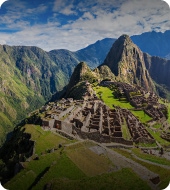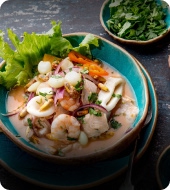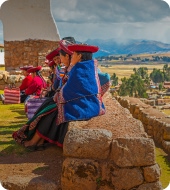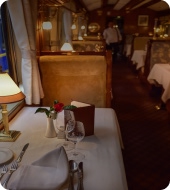
The Best Cultural Activities in Lima
Written by:Valencia Travel
Last Update: 2025-02-21
A trip to Lima is not complete without understanding its rich heritage. The art and cultural activities in Lima will give you an insight into the city's history, traditions, and artwork. Visiting the cultural attractions in Lima, from cultural performances to historical monuments, will offer a glimpse of the city's past; include some of these best cultural activities and attractions in Lima and enjoy the best of what the Peruvian capital has to offer.
Lima Plaza
Pachacamac
The temple of Pachacamac is an archaeological site 40 kilometers southeast of Lima, in the valley of the Lurin River. Several temples and old buildings are spread out over a vast area. More than 17 pyramids have been discovered to date, and this is regarded as one of the lost cities of Gold. Walking through these ruins, you will feel transported into the past. History and archaeology enthusiasts will be in their element on a trip to Pachacamac.
Pachacamac
MALI
Museo de Arte Lima, popularly known as MALI, is one of the major museums of Peru. Spread over an area of 4,500 square meters, the Museum was first opened in 1959 with the help of the members of the Board of Arts. The Museum now has grown to house exceptional art collections and provides several courses and workshops. It currently has over 40,000 students enrolled in over 106 workshops at three different venues. The MALI museum has a wide range of permanent and temporary exhibitions, which offer visitors a great insight into Peruvian cultural and political history.
Santa Rosa de Lima
This is a historical church in Lima. Santa Rosa dedicated her life to the poor and needy and turned her own house into a hospital. The church was built at the same place where she was born. It contains many impressive carvings, paintings, and altars. The wooden choir seats are the oldest in Lima yet are remarkably well-preserved.
Santa Rosa de Lima Church
Lima Cathedral
Lima Cathedral built in 1625 on the Plaza Mayor, is a Roman Catholic cathedral that retains its colonial structure and façade. The tomb of Francisco Pizarro lies here, overlooked by gold-leafed altars and wonderfully carved wooden choir stalls. The cathedral exhibits sculptures and oil paintings from the 17th and 18th centuries.
Santo Domingo
This is a colonial convent church in the historical center of Lima. In front of the Santo Domingo church is a beautiful courtyard with the exquisite tilework. Inside Santo Domingo are wooden carvings and old frescos. The lights are dim, and the air is cold. Guides will take you through the region's history and mythology as they lead you from one artwork to another. Ornate sculptures lead you to the dark wood altar. The stairs are wooden, and the roof is high. No wonder the acoustics in this place are excellent.
Santo Domingo
Museo Larco
Visitors can marvel at the many ancient Peruvian tapestries, ceramics, and jewelry while learning about the symbolism and purpose of each piece at The Museo Larco. You can also explore the Museum's storeroom, which contains over 30,000 pieces of pottery. This is quite a treat, as few of these are open to the public. Regarded as one of the world's top museums, Museo Larco (Larco Museum) holds an impressive collection of pre-Columbian artifacts. The Museum houses approximately 45,000 pieces and has the world's most extensive collection of pre-Columbian Peruvian jewelry and erotic pottery. Thus, for history enthusiasts, a visit to Museo Larco is one of the most exciting things to do in Peru.
Culinary Tours
What better way to absorb yourself in the culture of a city than by experiencing its gastronomy? For gourmets, a trip to Peru is worthwhile, even if only to experience Lima's culinary scene. Deemed the gastronomic capital of South America, Lima is home to some of the world's top-rated restaurants where you can sample flavors from all parts of Peru. Lima's evening culinary tours offer a complete overview of Peruvian cuisine, including Amazonian fare and an elegant dinner amid pre-Inca ruins.
Lima Cuisine
Huaca Pucllana
In Peru, archaeological sites are not limited to the Cusco Region. A 1,500-year-old adobe and clay pyramid is located in the heart of Lima's Miraflores district. Constructed by the Lima Culture around 500 CE, the Huaca Pucllana is urban Lima's most iconic archaeological site. The Huaca Pucllana was used mainly for ritual purposes and as a forum for skilled workers and heads of government. Visitors can follow a path along the top of the pyramid in the daytime and admire stunning views of the Miraflores and San Isidro districts. The site's tasteful lighting at night creates an intimate ambiance and an excellent dining option overlooking the area.
Barranco Art Museums
Due to Barranco's trendy and relaxed vibe, it has unofficially been deemed Lima's bohemian district. Barranco is defined by its colonial mansions, vast ocean views, and thriving art scene. Therefore, it's no surprise that it is where several of the most renowned Lima museums are based. The majority of Peruvian art collections focus on pre-20th-century works. Thus, the Museo de Arte Contemporáneo de Lima (MAC Lima) was created to shift the country's art scene toward the modern. Three striking glass structures house innovative and avant-garde works from Latin American contemporary artists. The museum also includes interactive exhibitions promoting critical thinking and cultural understanding. The privately owned Mario Testino museum showcases a permanent collection of Testino's iconic works and temporary collections from international artists. The mission of the Museum is to magnify Peruvian artists on a global scale while also showcasing contemporary international works for Peruvian audiences.
Pedro de Osma Art Museum
Monumental Callao
Once a prosperous port community, Callao is not typically regarded as a tourist destination as it acquired a dangerous reputation during the latter half of the past century. Monumental Callao is a collaboration of local artists, fashion designers, and galleries that rapidly shift the oceanside community's narrative toward its former glory. In Callao's historical section, their art movement provides locals with cultural alternatives by disseminating Callao's creativity. The association is based in Casa Ronald, a 120-year-old building evocative of Callao's rich architectural history.
 Aventure
Aventure
 Cultural
Cultural
 Gastronomy
Gastronomy
 Wellness
Wellness
 Local Living
Local Living
 Luxury
Luxury













